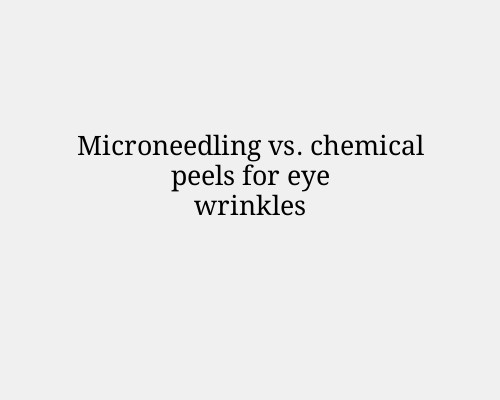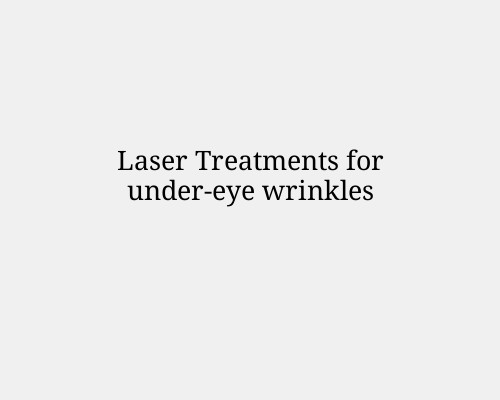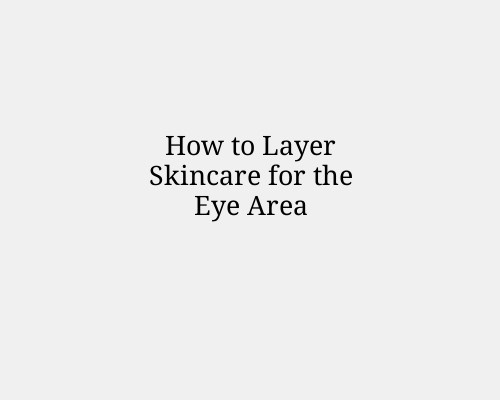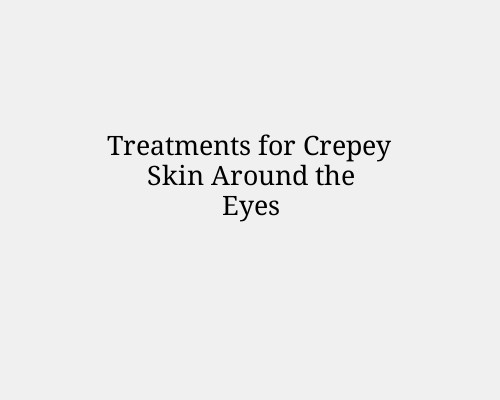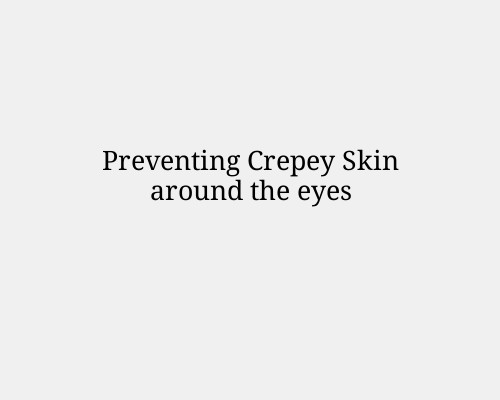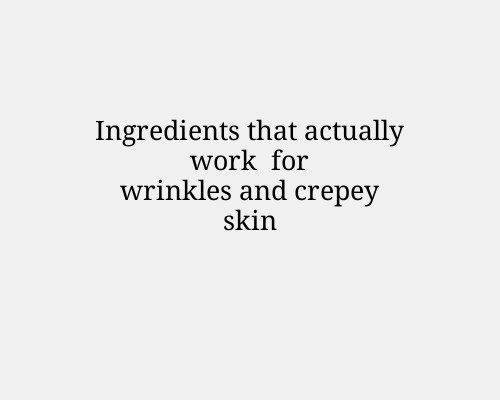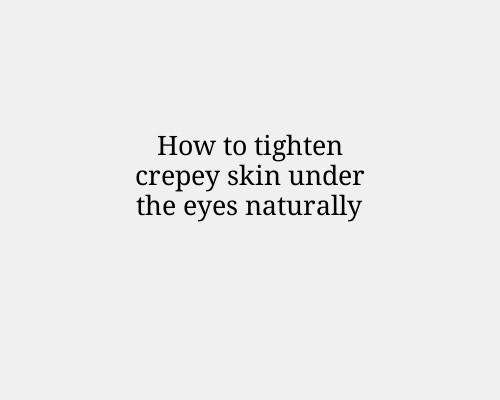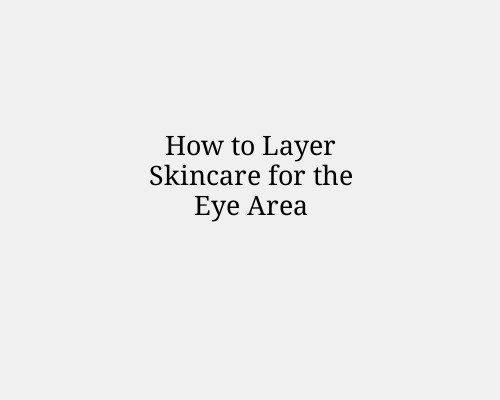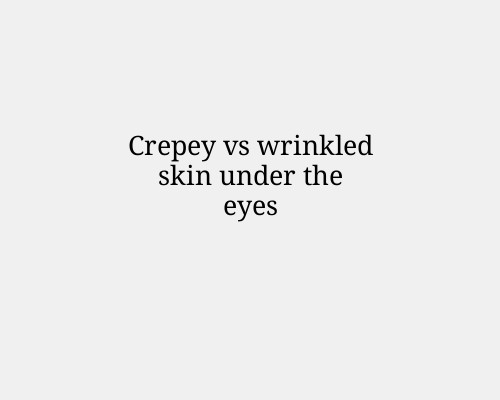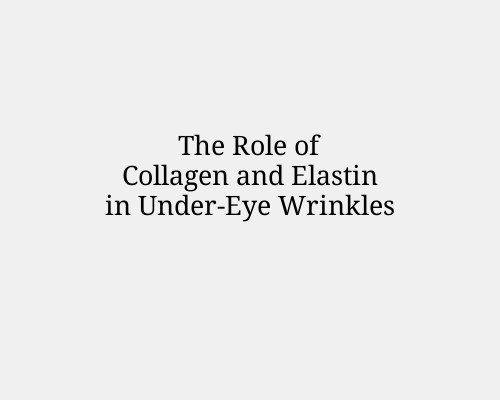
The Role of Collagen and Elastin in Under-Eye Wrinkles—and How to Boost Them
The skin around the eyes is one of the first places to show signs of aging. Thin, delicate, and lacking in oil glands, this area is especially vulnerable to the breakdown of structural proteins— primarily collagen and elastin. These proteins are responsible for maintaining skin firmness, elasticity, and youthful appearance. As their levels decline with age and external factors, under- eye wrinkles, sagging, and crepeyness become more noticeable.
In this article, we’ll explore the science behind collagen and elastin, explain why they degrade over time, and provide both topical and internal strategies to support their production and help reduce the appearance of under-eye wrinkles.
Understanding Collagen and Elastin
Collagen is the most abundant protein in the human body, forming the structural framework of the skin. It provides strength and firmness by creating a dense network of fibres in the dermis, the skin's second layer. Type I and Type III collagen are most prominent in the skin, with Type I responsible for tensile strength and Type III offering flexibility and elasticity.
Elastin, though less abundant, is just as crucial. It allows the skin to stretch and then return to its original shape. While collagen forms the sturdy scaffolding, elastin gives skin its resilience—like a rubber band snapping back after being pulled.
The Science of Aging Skin
The production of collagen and elastin peaks in our early 20s and declines steadily with age. After age 25, collagen production drops by about 1% each year. By the time most people reach their 40s and 50s, this cumulative loss becomes visibly apparent—especially around the eyes, where skin is only about 0.5 mm thick.
Key contributors to collagen and elastin degradation include:
Intrinsic aging: A natural decline due to genetics and the body’s internal clock.
Photoaging: UV exposure generates free radicals that break down collagen and elastin.
Oxidative stress: Pollution, smoking, and a poor diet accelerate cellular damage.
Glycation: High sugar intake causes proteins to stiffen and lose function.
Inflammation: Chronic low-grade inflammation (inflammaging) impairs skin regeneration.
As collagen and elastin fibres degrade, the under-eye skin loses its structure, leading to fine lines, wrinkles, hollowness, and sagging.
Topical Methods to Stimulate Collagen and Elastin
Topical treatments can support the skin's renewal processes and help stimulate the production of collagen and elastin. Consistency and correct formulation are key.
Retinoids (Retinol, Retinaldehyde, Tretinoin)
Retinoids are vitamin A derivatives that increase collagen synthesis and promote cellular turnover. They help fade fine lines, thicken the dermis, and improve skin texture. Prescription- strength tretinoin delivers faster results but may cause irritation, especially in the eye area, so start slowly and use gentle formulations.
Peptides
Peptides are short chains of amino acids that signal the skin to produce more collagen and elastin. Look for products with palmitoyl pentapeptide (Matrixyl), copper peptides, or signal peptides that boost dermal activity and improve elasticity.
Growth Factors
These naturally occurring proteins stimulate cell growth and tissue repair. Topical growth factors can promote fibroblast activity, which is essential for collagen and elastin production. They’re often found in medical-grade skincare.
Vitamin C (Ascorbic Acid)
A powerful antioxidant, vitamin C neutralizes free radicals and is essential for collagen synthesis. It helps firm the skin and brighten the under-eye area. Use stabilized formulations (10–20%) and pair with vitamin E and ferulic acid for enhanced effect.
Sunscreen
Daily use of broad-spectrum SPF is non-negotiable. UV radiation is the most significant extrinsic factor in collagen breakdown. Applying sunscreen around the eyes protects the delicate area from damage and helps preserve skin structure.
Hydrating Ingredients
Ingredients like hyaluronic acid, glycerin, and ceramides don't directly boost collagen but improve skin plumpness and barrier function, reducing the appearance of fine lines.
Internal Methods to Support Collagen and Elastin
What you put into your body is just as important as what you put on your skin. Certain nutrients and supplements can enhance collagen production from within.
Collagen Peptide Supplements
Hydrolyzed collagen peptides are broken down for better absorption. Clinical studies show that daily oral supplementation with 2.5–10 grams of collagen peptides can improve skin elasticity, hydration, and wrinkle depth in 8–12 weeks.
Look for Type I and III collagen sourced from bovine or marine origins, and choose brands with third-party testing and published studies.
Vitamin C
Since your body cannot produce vitamin C, dietary intake is essential for collagen synthesis. Rich sources include citrus fruits, strawberries, kiwi, and bell peppers. Supplements may also help if your intake is low.
Amino Acids (Glycine, Proline, Lysine)
These amino acids are building blocks of collagen and elastin. Bone broth, eggs, and protein- rich diets help provide the necessary raw materials. For strict vegetarians, plant-based collagen boosters with added amino acids can be a suitable alternative.
Antioxidants
Foods rich in antioxidants, such as berries, leafy greens, nuts, and seeds, help fight free radicals that degrade collagen and elastin. Vitamins A and E, selenium, and polyphenols like resveratrol are particularly beneficial.
Zinc and Copper
Zinc is critical for wound healing and collagen formation, while copper helps stabilize and cross-link collagen and elastin fibres. Ensure your multivitamin provides adequate levels of these trace minerals.
Hydration
Collagen thrives in a hydrated environment. Dehydrated skin appears dull and more wrinkled. Aim for adequate water intake daily and avoid excessive caffeine and alcohol, which can deplete hydration.
In-Office Treatments That Stimulate Collagen
While not topical or internal, it’s worth noting the effectiveness of professional treatments that directly stimulate collagen and elastin production:
Microneedling: Tiny punctures in the skin stimulate collagen regeneration.
Laser therapy (Fraxel, CO2): Targets deeper dermal layers to induce collagen remodelling.
Radiofrequency (RF) and Ultrasound (Ultherapy): Use heat to promote tightening and elasticity.
PRP (Platelet-Rich Plasma): Injected or applied after microneedling to enhance healing and collagen response.
These procedures can offer significant improvement but should be approached with care, especially around the eyes, and performed by licensed professionals.
Final Thoughts
The appearance of under-eye wrinkles is a visible sign of the underlying loss of collagen and elastin. While aging is inevitable, it can be managed by adopting a targeted approach that combines science-backed topicals, nutritional support, and consistent sun protection.
Rebuilding the skin's structural integrity takes time, so patience and long-term commitment are essential. A well-rounded strategy—starting in your 20s or 30s—can help maintain a firmer, smoother, and more youthful under-eye area for years to come.
